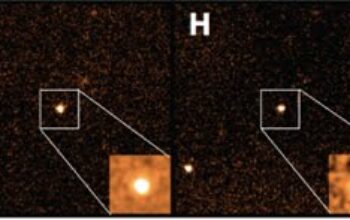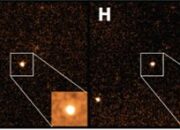Quantum computing represents a revolutionary paradigm shift in how we understand and execute computational tasks. But how does a quantum computer perform its calculations? This question invites scrutiny, as it requires a grasp of both the principles of quantum mechanics and the innovative architectures designed to exploit them. Thus, we embark on an exploration of quantum computation mechanisms, ranging from fundamental concepts to practical implications.
At the core of quantum computing lies the quantum bit, or qubit. Unlike classical bits that can exist in one of two states (0 or 1), qubits possess the remarkable property of superposition. This allows them to exist in multiple states simultaneously. Imagine a spinning coin; while it is in the air, it is neither merely heads nor tails but both at once in a quantum superposition. This phenomenon allows quantum computers to perform a multitude of calculations concurrently, dramatically increasing their computational capability.
However, superposition alone does not reveal the full prowess of quantum computing. The phenomenon of entanglement adds a layer of complexity and potentiality. When qubits become entangled, the state of one qubit becomes dependent on the state of another, no matter the distance between them. This peculiar connection enables quantum computers to process information in ways that classical computers cannot fathom, where the manipulation of one qubit instantaneously affects its entangled partner. Such interdependencies may seem esoteric, but they hold the key to resolving complex problems much more efficiently.
To harness the powers of qubits, quantum algorithms are employed. Classical algorithms, such as those utilized in traditional computing, undergo sequential logical steps. In contrast, quantum algorithms exploit both superposition and entanglement to process vast datasets in parallel. A noteworthy example is Shor’s Algorithm, which can factor large integers exponentially faster than the best-known classical algorithms. This capability poses a challenge not only for computational efficiency but also for cryptographic security, highlighting the potential implications of quantum computing on data encryption.
Despite the promise, building a functional quantum computer is fraught with challenges. Qubits are inherently fragile and susceptible to environmental disturbances, a phenomenon termed decoherence. At a macroscopic scale, this can occur due to interactions with noise, temperature fluctuations, or electromagnetic radiation. Consequently, the development of error-correction techniques is paramount. Quantum error correction codes, such as the Shor Code, aim to protect quantum information from errors induced by decoherence. By redundantly coding qubits, these techniques strive to yield stable and reliable computations.
The architecture of a quantum computer itself is diverse, with various physical implementations including superconducting qubits, trapped ions, and topological qubits. Each approach has its unique advantages and challenges. For example, superconducting qubits are relatively easy to manipulate with microwave pulses, yet they are highly sensitive to noise. Conversely, trapped ions offer longer coherence times but may require complex arrangements to achieve effective qubit connectivity. The choice of architecture significantly influences the operational efficiency and scalability of quantum systems.
A fundamental aspect of quantum computation is the quantum gate, the instrumental equivalent of classical logic gates. Quantum gates manipulate qubits through designated operations, such as the Hadamard gate, which creates superposition, or the CNOT gate, which facilitates entanglement. By orchestrating sequences of these gates, quantum circuits are constructed to perform calculations. The intricate combination of gates leads to the development of quantum circuits capable of executing sophisticated algorithms that were previously computationally prohibitive.
Entwined with the operational mechanics of quantum computing is the pivotal concept of quantum speedup. This term describes the exponential efficiency gain that quantum computers experience for specific problems. For instance, Grover’s Algorithm allows for database searching in √N time, offering substantial speed advantages for unstructured search problems. However, it is essential to note that quantum speedup does not apply universally; many problems remain NP-hard, where classical algorithms exhibit no equivalent efficiency advantage.
As we consider the practical applications of quantum computing, the implications range from medicine to finance, and cryptography to logistics. For instance, quantum simulations can significantly enhance drug discovery processes by accurately modeling molecular interactions at a quantum level. In finance, quantum algorithms may transform risk analysis and optimization problems, thus redefining market predictions. Furthermore, the advent of quantum-safe encryption mechanisms may protect sensitive information in a quantum age.
Nevertheless, as we gaze into the future, questions arise: How will society adapt to the reality of quantum computing? Will industries embrace this technology, or will ethical concerns and security issues impede its progress? The answers remain elusive, yet the very essence of quantum computing poses profound challenges and opportunities that could redefine the computational landscape.
In conclusion, quantum computers perform calculations through a harmonious interplay of qubits, superposition, entanglement, and quantum algorithms. By leveraging these sophisticated principles, they can tackle problems in ways that classical computers cannot, but they also face intricate challenges that necessitate ongoing research and development. As we advance into this fascinating frontier, a playful awareness of the potential unpredictability of quantum mechanics serves as a reminder of both the power and the enigma entrenched in the quantum realm.










